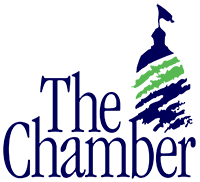Events Upcoming
New Members
Update Anti-Harassment Policies in Light of EEOC Guidance
Employers should update their anti-harassment policies in light of the U.S. Equal Employment Opportunity Commission’s (EEOC’s) guidance clarifying that harassment of LGBTQ+ employees can violate Title VII of the Civil Rights Act of 1964. The guidance also indicates when single instances of harassment are so extreme that termination might be in order.
Why Policy Updates Are Needed
Given the EEOC’s focus in its new guidance on LGBTQ+ people and pregnancy, employers should update their policies to ensure they clearly prohibit harassment on the basis of sexual orientation, gender identity, gender expression, and pregnancy-related decisions, said Carolyn Rashby, an attorney with Covington in San Francisco.
“In this vein, consider adding to anti-harassment policies examples of prohibited conduct on these bases, such as denying employees use of a restroom consistent with their gender identity, intentionally misgendering employees, or harassing an employee about contraceptive or other reproductive choices,” she said.
A recent survey of 878 business leaders by ResumeBuilder.com revealed that 16% of business leaders said transgender employees cannot use bathrooms aligned with their gender identity at their workplaces. On the other hand, 30% permitted the use of unisex bathrooms and 54% allowed transgender employees to use bathrooms consistent with their gender identities.
Based on personal views, 24% of business leaders opposed transgender employees using bathrooms consistent with their gender identities. Their primary reasons included concerns for women’s safety, biological perceptions of gender, and workplace confusion. The majority of survey respondents said that transgender employees have the right to use bathrooms aligned with their gender identities.
Rashby noted that the guidance on preventing harassment is the first from the EEOC since the 1990s. So, it’s the first guidance issued since the U.S. Supreme Court’s 2020 decision in Bostock v. Clayton County, which held that Title VII prohibits discrimination on the basis of sexual orientation and gender identity.
The EEOC’s guidance states that harassment can include outing an employee’s sexual orientation or gender identity without their permission, repeatedly and intentionally using the wrong pronouns, and denying an employee access to a bathroom consistent with their gender identity.
The guidance also addresses when virtual conduct constitutes harassment. “The EEOC explains that conduct conveyed over work-related systems or devices—including email, group chats, or video meetings—can contribute to a hostile work environment,” Rashby said. Racist imagery visible in a worker’s Zoom background could give rise to a harassment claim, as could sexual comments about an employee’s bed being visible during a video call.
Employers should consider updating policies to address conduct in the virtual work environment and include examples of prohibited conduct such as displaying inappropriate images in the background during video calls, Rashby said.
The guidance also addresses social media. The guidance “clarifies the EEOC’s view that conduct that occurs outside the workplace, including on social media accounts, and that does not target the employer or its employees and is not brought into the workplace generally will not have an impact on the workplace and therefore will not contribute to a hostile work environment,” said Rachel See, an attorney with Seyfarth in Washington, D.C.
But social media posts could contribute to a hostile work environment if the posts target a particular employee or if co-workers discuss the posts at work, Rashby said.
The guidance also includes examples of conduct that could support a claim of race-based harassment, she said. The agency explained that trying to touch a Black employee’s locs, criticizing a Black employee’s natural hair as “untamed or “unprofessional,” or asking, “Why does Black people’s hair look like that?” could support a claim of race-based harassment.
The guidance also says that harassment against an individual because of pregnancy, childbirth, or a related health condition can constitute unlawful sex discrimination.
Single Incidents Constituting Harassment
The guidance provides a nonexhaustive list of conduct that has been found sufficiently severe to establish a hostile work environment based on a single incident, said Jonathan Segal, an attorney with Duane Morris in Philadelphia and New York City.
Such hostile single incidents are: sexual assault; sexual touching of an intimate body part; physical violence or the threat of physical violence; the display of symbols of violence or hatred, such as a swastika, an image of a Klansman’s hood, or a noose; the use of disparaging animal imagery, such as comparing an employee to a monkey, ape, or other animal; a threat to deny job benefits for rejecting sexual advances; and the use of the “n-word” by a supervisor in the presence of a Black subordinate.
“It is difficult to envision a scenario in which an employer could respond to same or similar severe conduct with discipline short of termination,” Segal said.
Many of the examples in the guidance come from case law, which shows how courts are considering these issues, said Sharon Masling, an attorney with Morgan Lewis in Washington, D.C.
The proposed guidance included approximately 40 examples, but the final guidance includes more than 75 examples, said Emily Tichenor, an attorney with Polsinelli in Denver.
Interaction with Religious Expression
Religious expression may, according to the guidance, create a hostile work environment under certain circumstances, said Steve Kerbaugh, an attorney with Saul Ewing in Minneapolis.
“But what happens if an employee has a religious objection to using a name or pronoun that does not conform with another individual’s biological sex at birth?” Segal asked. “This question raises the broader issue of whether and how an employer reasonably can accommodate an employee’s sincerely held religious beliefs in the context of the employer’s obligation to prevent and remedy unlawful harassment.”
The EEOC left this issue for courts to address, he said.
Similarly, any clash of rights under equal employment opportunity laws and the National Labor Relations Act “ultimately will be decided by the courts,” Segal said.
This article courtesy of Society for Human Resource Management (SHRM)

